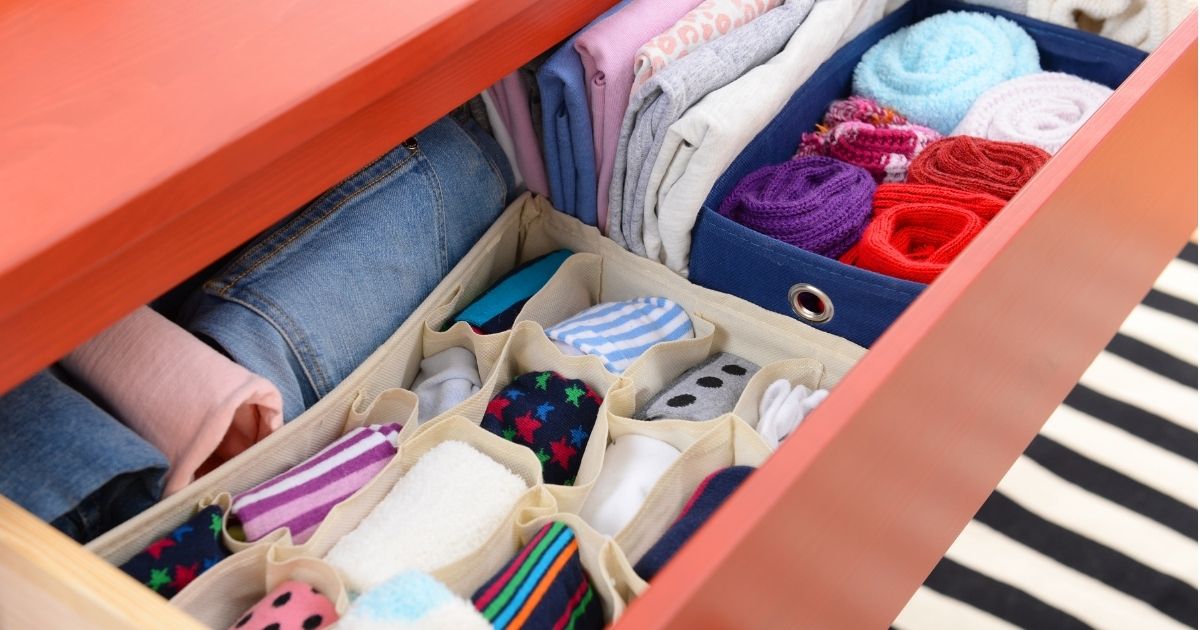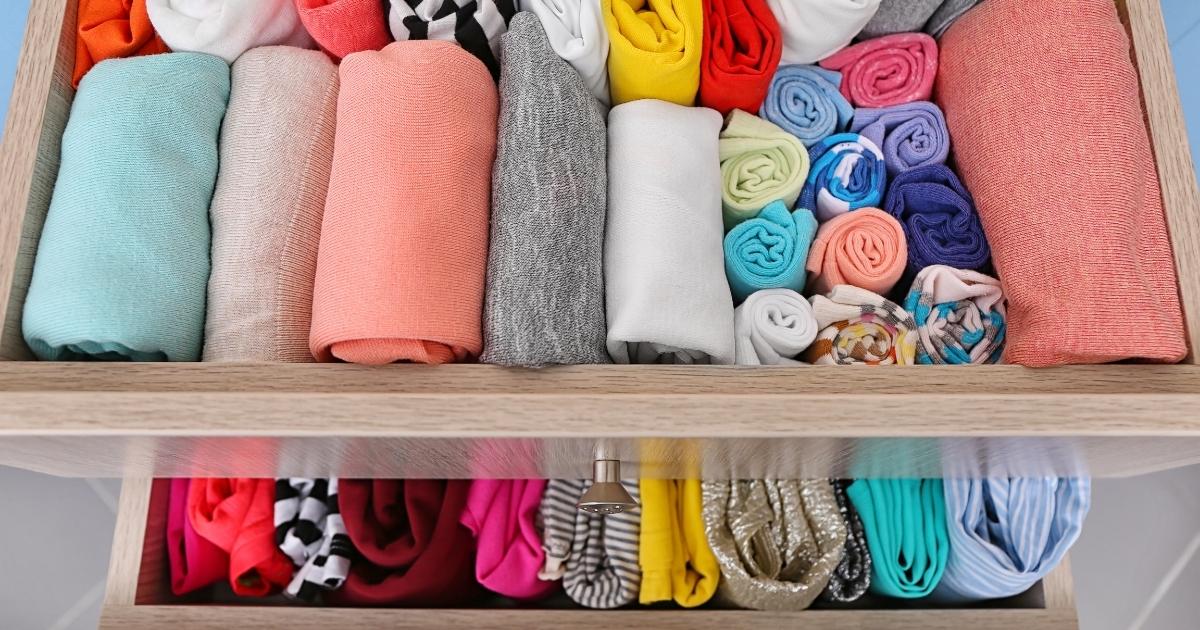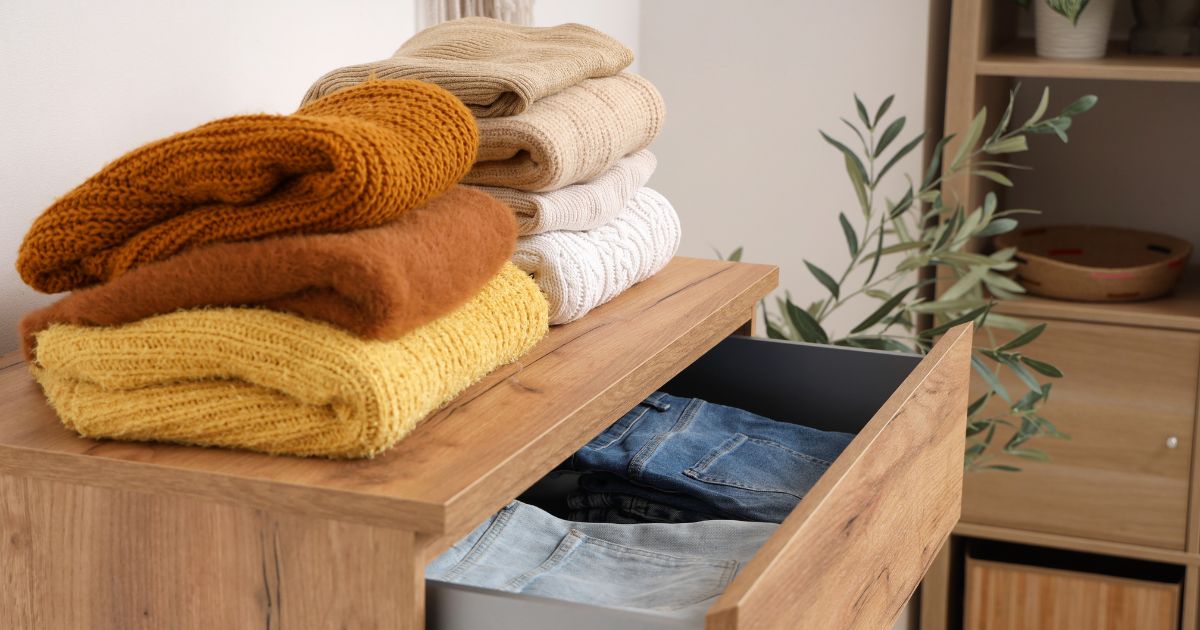Managing laundry is an ongoing task that can quickly become overwhelming without a proper system in place. While hanging clothes in closets or arranging them on shelves might seem straightforward, organizing clothes in drawers presents unique challenges. Creating and maintaining an effective drawer organization system is essential for controlling clothing chaos and maintaining order in your bedroom. The process requires initial effort but pays dividends in time saved and reduced stress when getting dressed each day.
The Benefits of Drawer Storage
Drawer storage offers several distinct advantages for clothing organization. Drawers provide easy access while protecting garments from dust and harmful UV rays. They’re particularly useful for storing items you want readily available but not necessarily on display. The enclosed nature of drawers also helps preserve the quality of your clothing by minimizing exposure to environmental factors that can cause fading or deterioration.
Drawers excel at organizing smaller clothing items and accessories. With various insert options available, you can maximize space efficiency and create dedicated compartments for items like socks, underwear, belts, and scarves. Additionally, dressers with drawers provide valuable storage space beyond your closet, allowing for better categorization of different types of clothing, from swimwear to athletic apparel. This versatility makes drawer storage an essential component of any well-organized wardrobe system.
The psychological benefits of well-organized drawers shouldn’t be underestimated. Opening a drawer to find neatly arranged, easily accessible clothing can start your day on a positive note and reduce the mental stress associated with choosing outfits. This organization can save precious minutes during busy mornings and eliminate the frustration of searching for specific items.
Comprehensive Organization Process
The journey to perfectly organized drawers begins with a thorough assessment of your current clothing situation. Start by evaluating every piece in your wardrobe to determine what stays and what goes. Your storage spaces should serve a functional purpose, housing only items you actively wear and enjoy. This initial purge is crucial for creating a manageable and maintainable organization system.
Clothing that hasn’t been worn in over a year should be considered for donation, unless it holds sentimental value. Look for duplicate items and pieces that no longer fit, as these take up valuable storage space that could be better utilized for regularly worn garments. Damaged items should be discarded, and sentimental pieces can be stored separately from everyday clothing.
During this evaluation process, be honest with yourself about your wearing habits and lifestyle needs. Consider factors such as your daily activities, work requirements, and seasonal weather patterns when deciding which items to keep. This thoughtful approach ensures your drawer space is dedicated to clothing that truly serves your current life situation.

Preparation and Measurement
Before implementing your organization system, thoroughly clean your drawers. Remove all items and wipe down surfaces to eliminate dust, dirt, and potential pests. This ensures your clothes will be stored in a clean, fresh environment. Consider using drawer liners or cedar blocks to add a pleasant scent and provide additional protection against moisture and insects.
While the drawers are empty, take precise measurements of their height, width, and length. These measurements are crucial when selecting drawer organizers and dividers. Choose simple solutions that maximize vertical storage space, protect clothes from snagging, and maintain clear category separation. The right organizational tools can dramatically increase the functionality of your drawer space.
Consider investing in quality drawer organizers that suit your specific needs. Options include adjustable dividers, small bins or boxes for accessories, and specialized organizers for items like undergarments or socks. The key is selecting tools that work with your drawer dimensions and accommodate the types of clothing you plan to store.
Categorization Strategies
Once you’ve culled your wardrobe, organize the remaining items into categories. This step can be approached in different ways, depending on personal preference. Some people prefer organizing by category, grouping similar items together like jeans with jeans and sweaters with sweaters. Others opt for a color-coded system, creating a rainbow effect within their drawers. Either approach can work effectively as long as it makes sense to you and helps maintain organization.
Consider creating subcategories within your main groupings. For example, separate work clothes from casual wear, or divide t-shirts by sleeve length. This detailed organization makes it easier to locate specific items and maintains order over time. Think about your daily dressing routine and arrange categories in a way that supports your natural habits.
Implementation and Storage
With categories established, begin placing items in drawers using consistent folding methods. Stack clothing vertically within drawer dividers, separated by category. This vertical arrangement allows you to see all similar items at once, making selection easier. For larger clothing items, consider using a folding board to maintain consistency in size and shape.
The key to successful drawer organization is maximizing vertical space while maintaining visibility. The file folding method, popularized by Marie Kondo, works particularly well for this purpose. This technique involves folding clothes into compact rectangles that can stand upright, allowing you to see every item at once when you open the drawer.
Avoid overstuffing drawers; each item should have its designated space. Consider frequency of use when deciding drawer placement. Daily essentials like underwear and socks should occupy top drawers for easy access. Casual wear, if worn frequently, should also be readily accessible. Lower drawers can house seasonal or less frequently used items.

Maintenance Strategies and Long-Term Success
Maintaining organized drawers requires ongoing attention and commitment. Labels can be particularly helpful, especially in shared spaces or when multiple people handle laundry duties. Color-coding not only assists in decision-making but also helps prevent unnecessary duplicates and creates visual appeal.
Regular maintenance prevents overwhelming accumulation of disorder. Instead of waiting until drawers become chaotic, address small issues immediately. When you notice an item out of place, take a moment to fold it properly rather than allowing disorder to compound. This “touch it once” principle helps maintain organization with minimal effort.
For long-term success, consider implementing a one-in-one-out policy, especially if your drawers are at capacity. This approach prevents overcrowding and maintains the functionality of your organization system. Regular reviews of drawer contents help ensure the system continues to serve your needs effectively.
Seasonal transitions provide natural opportunities to reassess your drawer organization. Use these times to rotate clothing, evaluate your storage needs, and make any necessary adjustments to your system. This periodic review helps maintain the effectiveness of your organization while preventing accumulation of unused items.
Your drawer organization system should complement your lifestyle and daily routines. The goal is to create a sustainable solution that makes accessing and maintaining your wardrobe easier, not more complicated. With proper implementation and consistent maintenance, organized drawers can significantly streamline your daily routine and reduce the stress associated with clothing management.
Remember that perfection isn’t the goal – functionality is. Your system should work for you and your specific needs, even if it doesn’t look exactly like the pictures in organizing magazines. Regular evaluation of your system allows for adjustments as your needs change, ensuring your drawer organization continues to serve you well over time.
Whether you’re decluttering, renovating your space, or managing a move, My Stack Box provides the perfect combination of convenience, security, and professional service to help you achieve your organization goals. Contact us today to discover how we can transform your space and simplify your storage needs!


